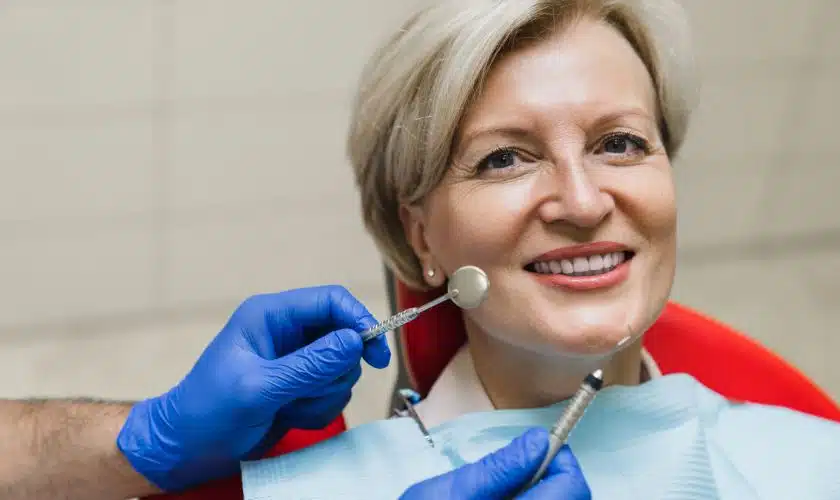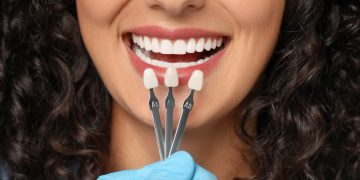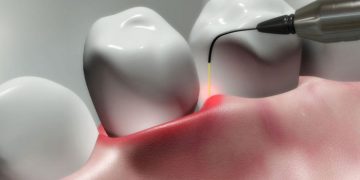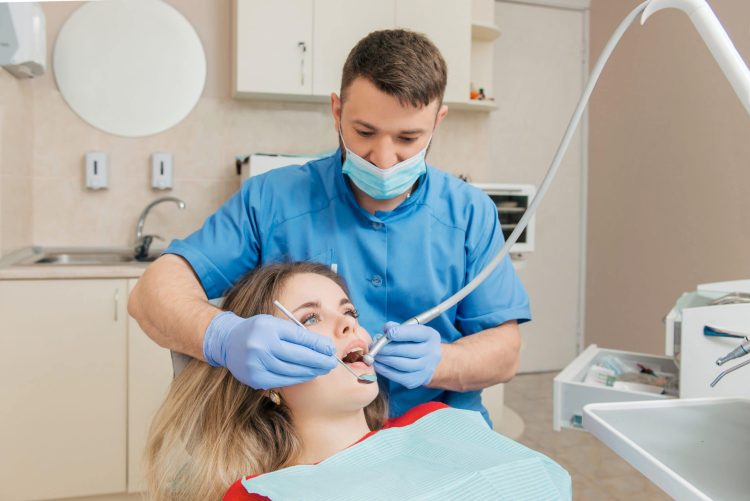Introduction
Cosmetic dental procedures, including treatments like veneers, teeth whitening, and dental implants, have become increasingly popular as people seek to improve the appearance of their smiles. These procedures can dramatically enhance self-esteem and give individuals the confidence to smile freely. However, achieving the perfect smile doesn’t end when the procedure is completed. Good oral hygiene is vital in preserving the results of cosmetic dental work over time.
Whether it’s veneers, whitening, or other cosmetic treatments, maintaining oral health through regular brushing, flossing, and professional care is essential for ensuring that the results of these treatments last as long as possible. Without proper care, the results of cosmetic dental work can diminish, leading to discoloration, plaque buildup, or even damage to the work itself.
In this article, we will explore how daily care routines, proper maintenance steps, and professional cleanings are essential in preserving the aesthetics and longevity of cosmetic dental work. We’ll discuss best practices to keep your smile as beautiful as the day you left the dentist’s office.
How Brushing, Flossing, and Mouthwash Help Preserve Aesthetics
The foundation of any successful oral hygiene routine is consistent brushing, flossing, and using mouthwash. These practices are not only essential for your overall oral health but also for maintaining the aesthetics of cosmetic dental work like veneers, crowns, and teeth whitening.
1. Brushing: The First Line of Defense
Brushing your teeth is the most basic and effective way to maintain both oral health and the appearance of your cosmetic dental work. For veneers, crowns, and implants, brushing helps to remove food particles, bacteria, and plaque that can cause staining or decay. To preserve the aesthetics of your dental work:
- Use a Soft-Bristled Toothbrush: Hard bristles can damage the surface of your veneers and other cosmetic dental work over time. Soft bristles ensure that the surface of your veneers stays intact while still providing a deep clean.
- Choose a Non-Abrasive Toothpaste: Whitening or abrasive toothpastes can cause damage to the protective coating on veneers and can wear them down faster. A non-abrasive, fluoride toothpaste is ideal for daily use.
- Brush Twice a Day: Brush your teeth at least twice daily for a full two minutes. This helps remove plaque and reduces the buildup of bacteria that can lead to gum disease and staining. Make sure to brush all surfaces of your teeth, including the gum line and around your veneers or crowns.
- Brushing After Eating: After meals or consuming staining foods (like coffee or berries), brushing helps to prevent staining and plaque buildup that could affect the aesthetic quality of your cosmetic dental work. If brushing isn’t immediately possible, rinsing your mouth with water can be a good alternative until you can brush.
2. Flossing: Essential for Cleaning Between Teeth
Flossing is often overlooked, but it plays a significant role in maintaining both the health of your gums and the integrity of your veneers, crowns, or teeth whitening results. Plaque and food particles can get trapped between your teeth and under the edges of your cosmetic dental work, which can lead to gum irritation, tooth decay, and even staining.
- Use Waxed Floss or Dental Tape: For those with veneers, using a waxed floss or dental tape will be gentler and less likely to catch or damage the edges of your veneers. Floss gently between your teeth and around your veneers without snapping the floss to avoid causing damage.
- Floss Once a Day: Make it a habit to floss at least once a day to remove any buildup between your teeth that brushing alone may miss. Doing so can prevent gum disease, cavities, and staining that could impact your cosmetic treatments.
3. Mouthwash: A Complement to Brushing and Flossing
Mouthwash is a useful addition to your oral care routine. While it can’t replace brushing or flossing, it complements these activities by helping to freshen your breath, reduce bacteria, and neutralize acids that could harm your teeth and veneers.
- Alcohol-Free Mouthwash: Choose an alcohol-free mouthwash, as alcohol can dry out your mouth and irritate the gums. An alcohol-free rinse will freshen your breath while keeping your mouth hydrated.
- Fluoride Mouthwash: A fluoride mouthwash can help protect your natural teeth and enhance the protective barrier around your veneers or crowns. Fluoride helps to strengthen enamel and prevent decay, making it an important part of maintaining your cosmetic dental results.

Maintenance Steps for Keeping Veneers and Whitening Intact
When it comes to maintaining cosmetic dental treatments like veneers and teeth whitening, daily care is essential. However, there are other maintenance steps you should take to ensure that your veneers and whitening results stay as fresh as possible.
1. Avoiding Staining Foods and Drinks
One of the primary concerns after getting veneers or whitening treatments is the risk of staining. While modern veneers are resistant to staining, they are not immune. Certain foods and drinks can cause your veneers or teeth to discolor prematurely.
- Avoid Acidic Foods and Drinks: Acidic foods, such as citrus fruits and tomatoes, as well as acidic drinks like soda and wine, can erode the protective surface of your veneers and teeth. This increases the risk of staining and damage.
- Limit Staining Beverages: Coffee, tea, red wine, and dark berries are well-known for their staining properties. It’s advisable to consume these in moderation, and always rinse your mouth afterward. Drinking these beverages with a straw can reduce their contact with your veneers.
- Avoid Smoking: Smoking and tobacco products can cause staining and accelerate the degradation of your veneers or whitening results. Quitting smoking not only benefits your oral health but also helps preserve your cosmetic treatments.
2. Using a Night Guard for Protection
If you grind your teeth, especially at night, consider investing in a night guard. Teeth grinding (bruxism) can cause wear on your veneers or other dental treatments. A night guard will help protect your cosmetic dental work and keep it in top condition.
3. Touch-Up Treatments for Teeth Whitening
While veneers are stain-resistant, whitening treatments may fade over time. For those who have undergone teeth whitening, touch-up treatments every few months can help maintain the bright, white smile you’ve worked for. Whitening toothpaste or at-home whitening kits can assist with maintaining the results. However, be sure to follow your dentist’s advice to avoid overuse of whitening products, which can lead to sensitivity or damage to your enamel.
The Role of Professional Cleanings in Cosmetic Care
While at-home care is crucial for preserving cosmetic dental work, professional cleanings performed by a dentist or hygienist are an integral part of maintaining the results of your cosmetic treatments.
1. Removing Tartar and Plaque Build-Up
Even with regular brushing and flossing, tartar and plaque can accumulate in hard-to-reach areas. Professional cleanings are essential for removing tartar and plaque, which can contribute to gum disease, discoloration, and tooth decay. Removing these buildups helps preserve the appearance of your veneers and prevents damage to your natural teeth.
2. Checking for Wear and Tear
During a professional cleaning, your dentist or hygienist will inspect your veneers, crowns, or other cosmetic dental work for any signs of wear, chipping, or damage. Early detection of potential issues can help prevent more severe problems down the line. Regular check-ups also provide an opportunity to discuss any concerns you may have regarding your cosmetic treatments.
3. Professional Polishing
Professional cleanings also include polishing, which helps to remove surface stains from veneers and other dental work, restoring their shine and luster. Polishing ensures that your smile continues to look bright and fresh between whitening touch-ups.
Conclusion
Maintaining the results of your cosmetic dental work is as important as the procedures themselves. Proper oral hygiene, including brushing, flossing, and using mouthwash, plays a vital role in preserving the aesthetics of your veneers, crowns, and teeth whitening. By incorporating smart habits such as avoiding staining foods, using a night guard, and scheduling regular professional cleanings, you can ensure that your smile stays radiant and healthy for years to come.
Ultimately, investing in cosmetic dental treatments is just the beginning. It’s the ongoing commitment to proper care that will allow you to fully enjoy and preserve the benefits of a beautiful smile.













































Discussion about this post